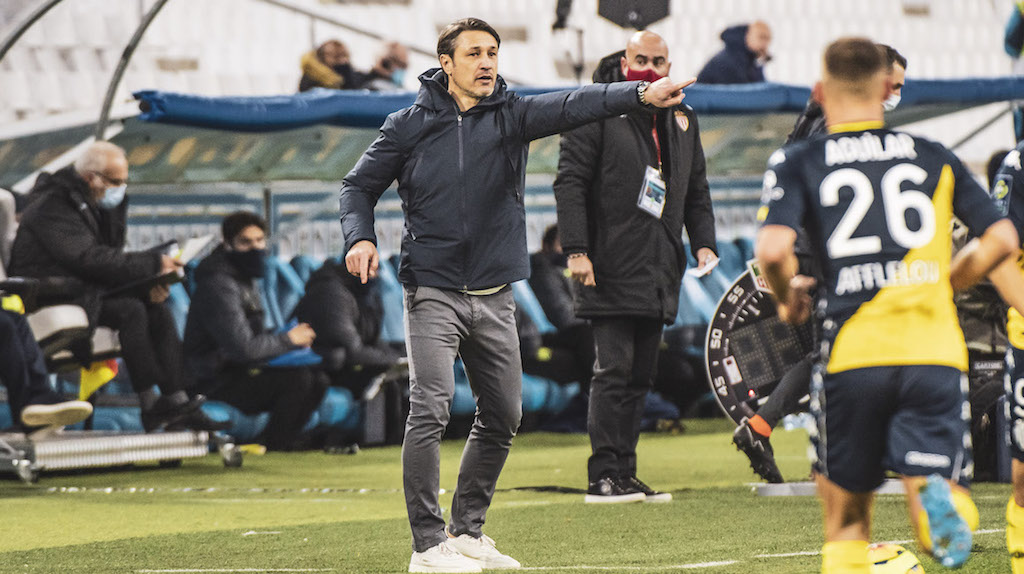One of the hallmarks of AS Monaco’s exceptional run of form has been Niko Kovac’s decision to organise his team into a 3-2-4-1 formation when his team are in possession.
Giving his team a strong base to build out from the back, stretch the pitch and ensure occupation of key attacking areas is achieved, Kovac deserves immense credit for his astute tactical setup. The fact Monaco have won eight of their last nine games and are unbeaten in 11 serves as a testament to the success of this framework.
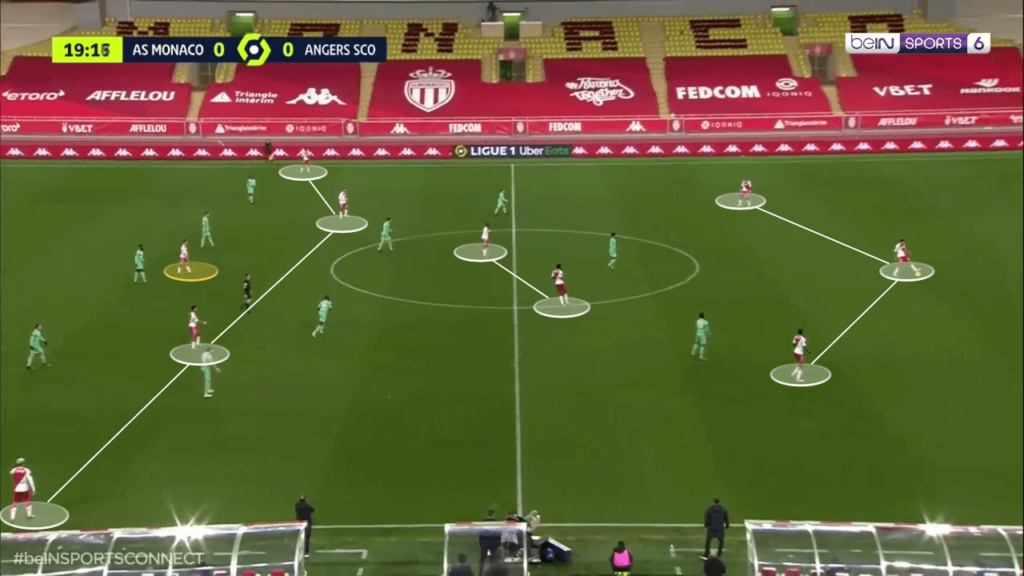
Key in propelling them from mid table into Champions League challengers, the players have adapted superbly to their manager’s demands. Scoring an impressive 28 goals in their last 11 games, it’s clear how effective this animation has been, with the strikers and attacking midfielders afforded many opportunities to find the back of the net.
With Wissam Ben Yedder leading the line and usually supported by Sofiane Diop and Kevin Volland, who drift infield to act as dual 10s, defenders have found them a nightmare to handle. Constantly asking questions of the opposition backline due to their intelligent movement and understanding, their slick dovetailing to create space for themselves and one another has been a highlight.
Forever pulling apart enemy rearguards, Ben Yedder’s beautifully timed drops towards the ball and runs in behind have seen him be a real nuisance.
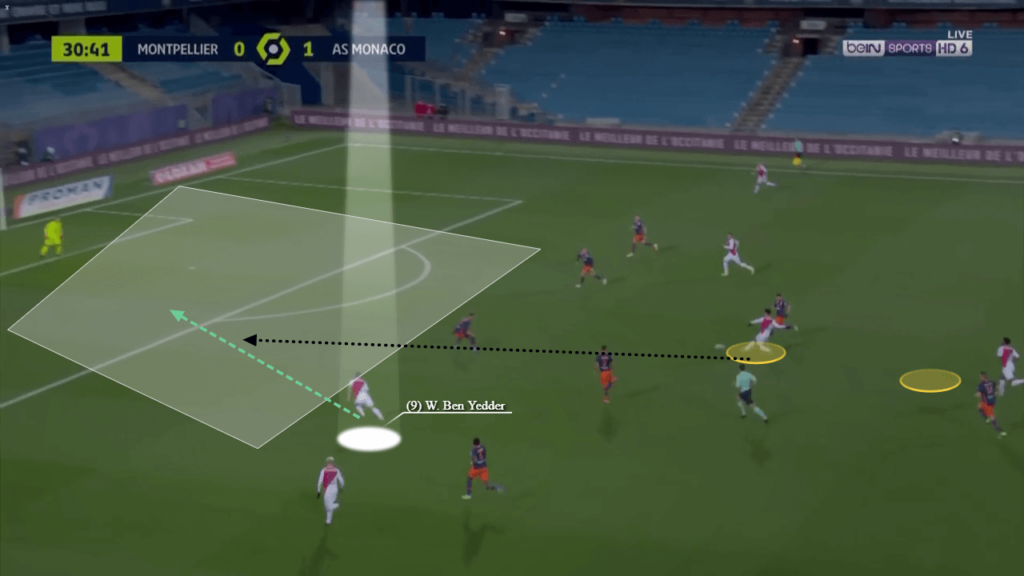
Aside from exploiting space expertly for himself, the way his movement draws and pins markers generates openings for Volland and Diop to take advantage of. The below examples offer a fine example of this, with him equally adept at producing room for his comrades both in front of and behind the defence.
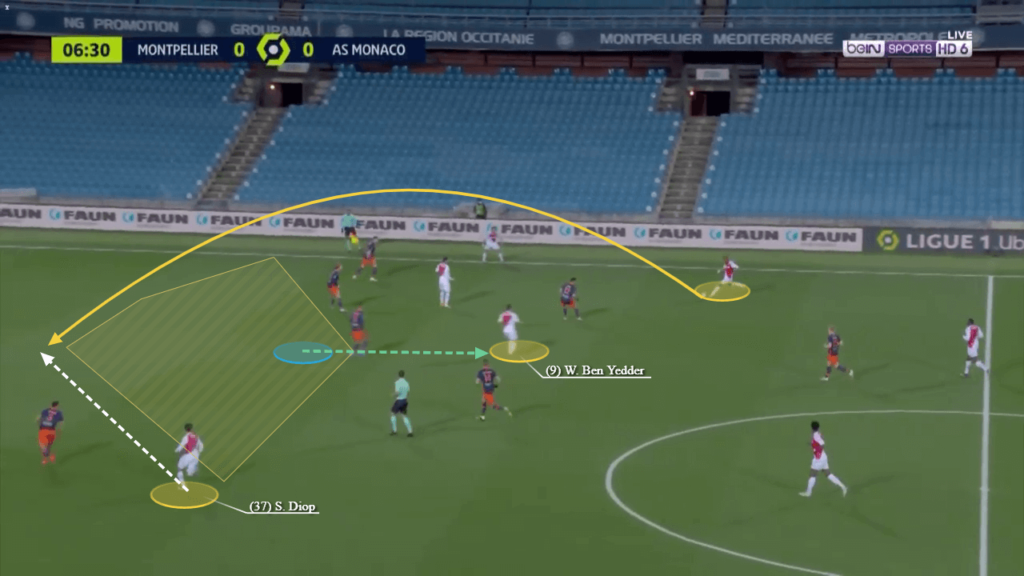
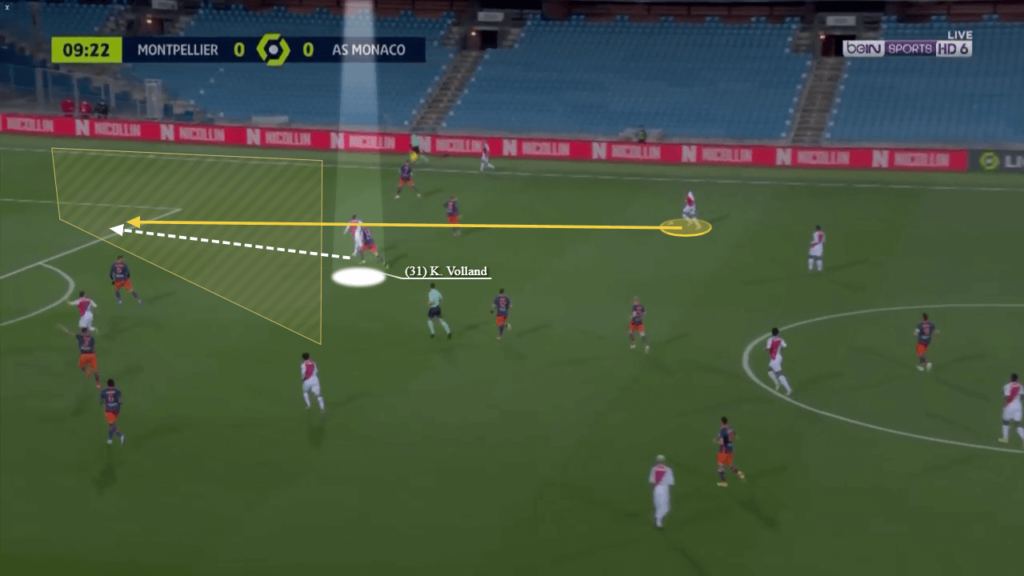
To shine the light on Diop and Volland, and they’ve been masters at connecting midfield and attack with their outstanding technical qualities, resistance to pressure and ability to find space between the lines extremely valuable. Causing issues for defenders with their positioning due to them being unsure whether to step out, this often leaves the duo space to receive in.
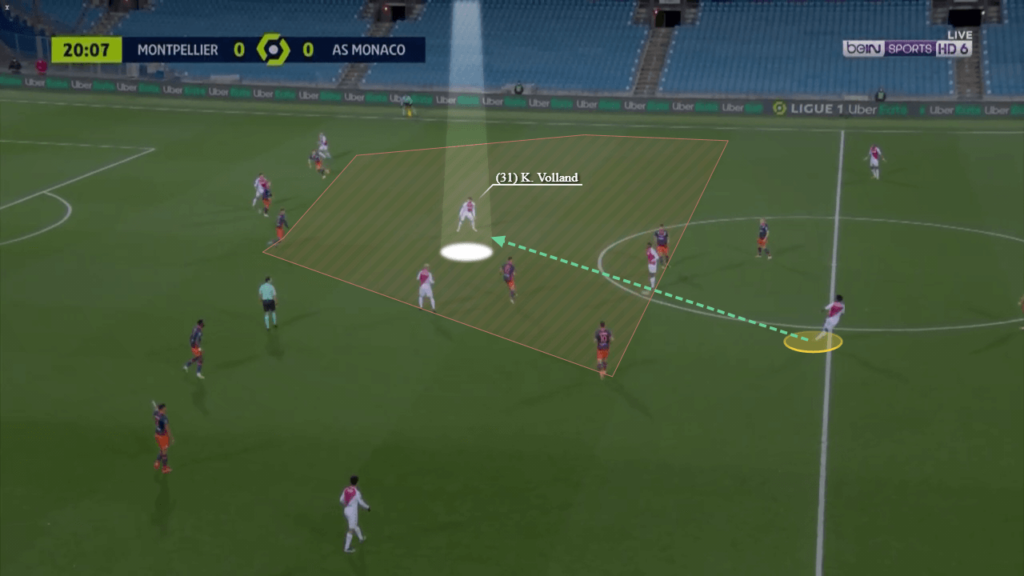
How Volland, Diop and Ben Yedder will often be positioned within close proximity so they can combine intricately to unlock opponents and perform slick rotations has compounded issues for defenders by disrupting their reference points and rhythm.
The way Diop and Volland have helped create overloads out wide and in the half spaces has also been good to see, which has enabled them to progress down the flanks smoothly. Furthermore, their rotations with the nearby wingbacks has given them some extra variety, with them pulling wide as the wingbacks sharply underlap.
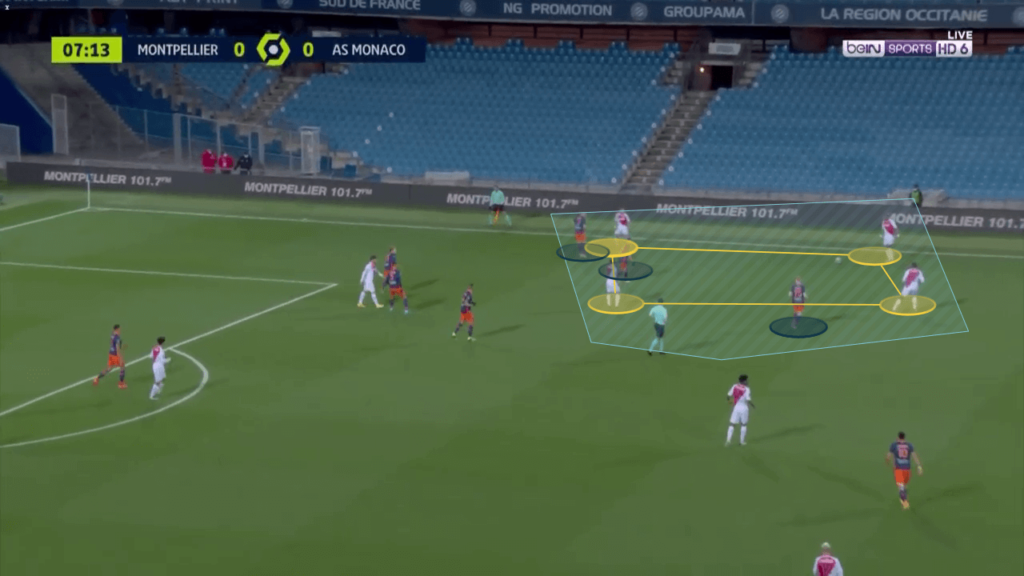

The role of the wingbacks has been valuable in terms of marauding forward on the overlap to make runs in behind too, which stretches defences horizontally and vertically. The likes of Caio Henrique and Ruben Aguilar can then be well placed to fire in crosses and cutbacks into the area. The fact Monaco typically get multiple numbers into the area who tailor their runs at varying heights and depths ensures the ball holder has many viable options inside the box.
The impact of Youssouf Fofana and Aurelien Tchouameni in central midfield can’t be overlooked, for the Frenchmen have been excellent at helping Monaco control and dictate the tempo of matches. So comfortable on the ball and aware of where defenders are, they make astute decisions on whether to hit a one touch pass, turn and face, protect the ball while waiting for an outlet or strategically draw out a marker.
Boasting brilliant passing ranges and capable of breaking the lines, switching the play, hitting through balls in behind or recycling possession swiftly, they’ve been exceptional in helping Monaco progress through the thirds.
If they are marked by an opponent, the way they drag their opponents towards them to open upfield passing lanes allows them to impact proceedings despite not touching the ball.
Generally remaining nearby to one another, in doing so, this enables close connections to pass to one another, but also so they can support each other and provide protection to their backline in case of a turnover. Indeed, considering how high the wingbacks push and how many numbers Monaco commit towards attacks, this amplifies the significance of their roles.
Building up in a back three, Monaco will look to achieve a 3v2 numerical superiority against the opposition’s first line of pressure. By spreading themselves out, this makes the pressing distances large for their foes, allowing Monaco plentiful time and space on the ball to execute their actions. Due to the pressers being outnumbered and having to cover large areas, the wide central defenders eventually will find vacant spaces to aggressively dribble into.
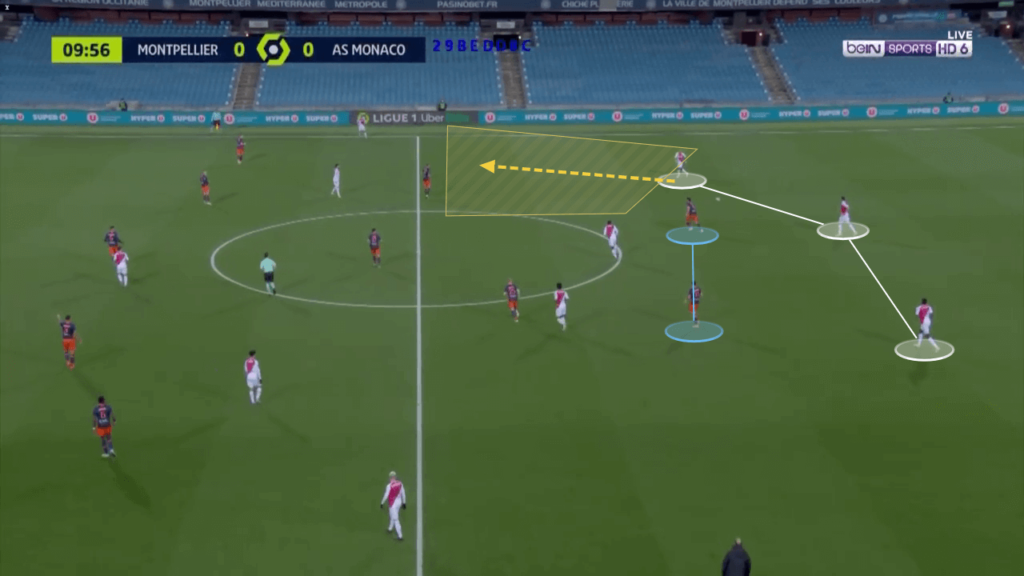
In such cases, Djibril Sidibe, who will drop back from his nominal right back slot, and the wide splitting Benoit Badiashile are the main beneficiaries of this. Relishing every opportunity to charge ahead and provoke a presser out from midfield to then pinpoint a free man or open a passing lane, they’ve done this efficiently. Seeing as their nearby wingback, closest centre mid and infield 10 will often pin back closeby opponents, this helps grant them valuable space to carry into or assess their available passing options.
By the numbers, their 52 goals scored (second best in Ligue 1), 312 shots (third best), 534 touches inside the area (third best), 292 attempted through balls (third best), 99 key passes (third best) and 1577 passes completed into the final third (fourth best) illustrates what a threat they pose.
When asked about his change to a three at the back in possession, Kovac offered a fascinating insight into his thought process. “When I got there, I said that I needed time to implement some things. Some mentalities and goals had to be changed. Relationships are being created, and we are working day after day, week after week, game after game to achieve this,” he said.
“The team is progressing, and we need to take another step forward. When I was in Frankfurt, we played like that with three defenders, and that gave us something extra. Djibril is able to play in this three-man defense, he brings us confidence. It’s not easy to play against us right now, we’re in good form. We are less predictable, we’re creating spaces and opportunities. It’s good for us.
He then added this on the benefits of the system: “It (the system) allows the players to have a solid base with three at the back when we are in possession. It’s clearer in their minds now. When playing with four defenders, there is always a need to pay attention to covering runs. It’s clearer with three defenders, and the wingbacks can show their offensive talent. It’s easier for the players overall, they understand things better.”
Considering Kovac has only really been in charge for a little over half a season, there’s every reason to suggest Monaco will improve even further as they continue to refine the finer details of Kovac’s game plan.
Successful at both creating chances and ensuring his players are in quality positions to progress the ball courtesy of their positioning, Monaco’s 3-2-4-1 offensive animation has afforded the team a formidable foundation to wreak havoc going forward even though they know work is needed to tighten up defensively.
Bringing polished performances and valuable results, Kovac deserves praise for implementing this system that’s emphatically getting the best out of his players, for it’s unquestionably been one of the catalysts behind their tremendous upturn in form.










